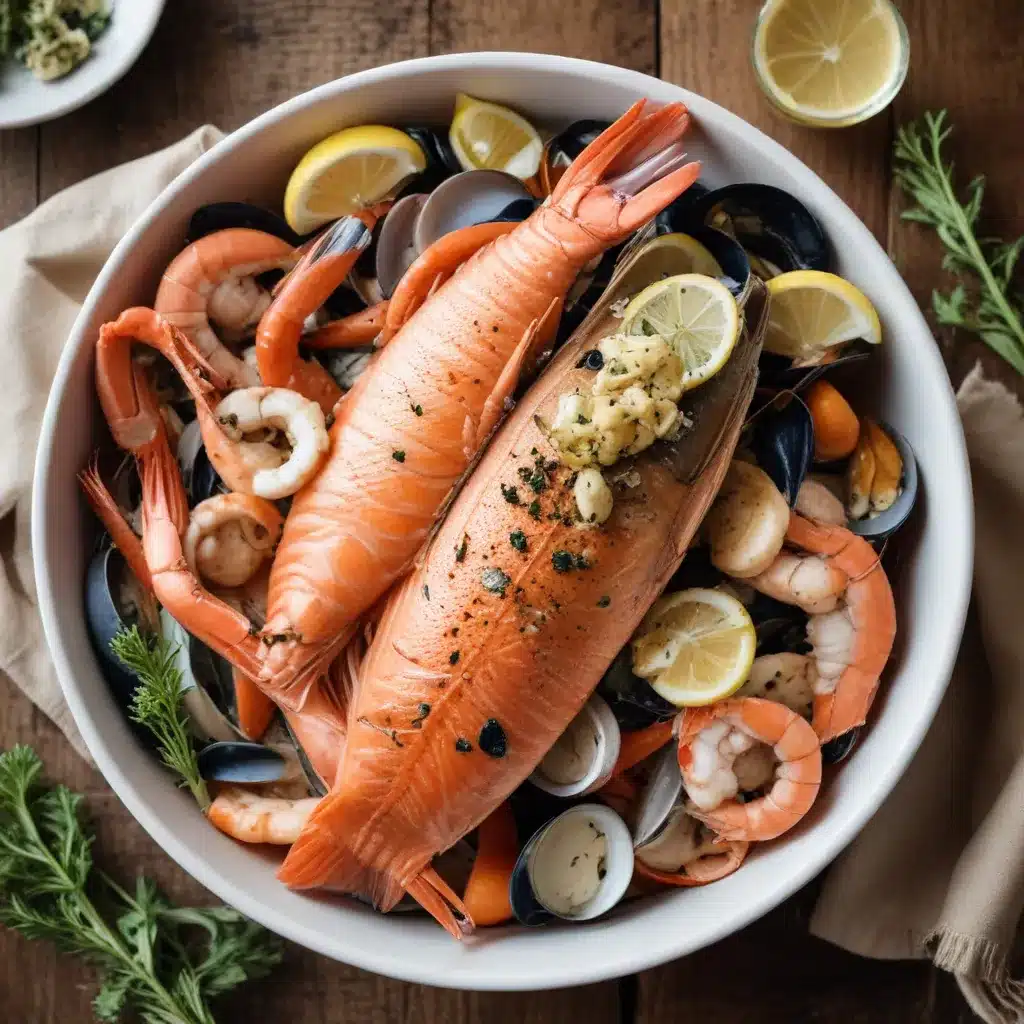
As a seafood dining expert writing for Fish Tales Cafe, I’m excited to share my insights on selecting, handling, and enjoying the finest ocean-fresh fare. From identifying cod quality to mastering global seafood traditions, this comprehensive guide will empower you to navigate the bounty of the sea with confidence.
Seafood Selection
The first step to crafting mouthwatering seafood dishes is sourcing the freshest possible catch. When evaluating finfish like cod, look for bright, clear eyes; firm, elastic flesh; and a clean, briny aroma. Avoid any fish with discolored skin, dull eyes, or a strong fishy odor, as these are signs of deterioration.
Seasonality is also crucial for optimal flavor and sustainability. Many species, including cod, have peak harvest periods when they are most abundant and flavorful. Check with your local seafood purveyor or consult online resources to stay informed on what’s in season. Choosing sustainable options, marked by eco-labels like the Marine Stewardship Council (MSC) certification, ensures you’re supporting responsible fishing practices.
Seafood Handling
Proper handling and storage are key to preserving the integrity of your seafood. When transporting purchases, use an insulated cooler packed with ice to maintain a temperature between 32-40°F. At home, store finfish and shellfish in the coldest part of your refrigerator, ideally at 40°F or below. Wrap them tightly in plastic or place in airtight containers to prevent moisture loss and cross-contamination.
Before preparation, rinse seafood under cold running water and pat dry with paper towels. For whole fish, fillets, or steaks, use a sharp knife to fillet the flesh, removing any bones. For shellfish like mussels or clams, scrub the shells and discard any that are cracked or remain open when tapped. Proper cleaning and trimming ensures your seafood is ready for cooking.
Seafood Types
The world of seafood offers a diverse array of options, each with its own unique flavor profile and culinary applications. Cod, a firm, flaky white fish, is a versatile staple that can be baked, grilled, or pan-seared. Other popular finfish include salmon, tuna, halibut, and tilapia, each with distinct nutritional qualities and preparation methods.
For shellfish enthusiasts, shrimp, scallops, oysters, and crab are perennial favorites. Clams, especially the prized razor clams of the Pacific Northwest, offer a delicate, briny sweetness when prepared properly. Adventurous eaters may also enjoy exploring sustainable and underutilized species like squid, octopus, and sea urchin.
Seafood Nutrition
Seafood is a nutritional powerhouse, boasting an impressive array of essential vitamins, minerals, and healthy fats. Cod, for instance, is an excellent source of protein, vitamin B12, and selenium, while also containing beneficial omega-3 fatty acids. Many types of fish and shellfish are low in saturated fat and high in lean protein, making them an ideal choice for health-conscious diners.
Those with dietary restrictions or food allergies can also find ample gluten-free options within the seafood realm. Grilled, baked, or steamed preparations are naturally free of gluten, allowing everyone to enjoy the bounty of the sea.
Seafood Recipes
The culinary possibilities with seafood are endless. For a simple yet elegant preparation, try grilled cod with a lemon-herb beurre blanc sauce. Seafood salads, such as a tuna Niçoise or shrimp ceviche, offer refreshing, light meals. Heartier dishes like baked cod au gratin or clam chowder showcase the versatility of various seafood species.
When cooking seafood, be mindful of doneness to avoid overcooking. Searing, poaching, and en papillote (baking in parchment paper) are effective techniques for preserving the tender texture and delicate flavors. Experiment with global flavors, such as Asian-inspired miso-glazed salmon or Mediterranean-style baked halibut with tomatoes and olives.
Seafood Safety
Food safety is paramount when handling seafood. Proper refrigeration, thawing, and cooking practices help prevent the risk of foodborne illnesses. Adhere to recommended internal temperature guidelines, typically 145°F for finfish and 160°F for shellfish.
Those with seafood allergies or sensitivities should exercise caution when dining out or preparing their own meals. Many restaurants are well-versed in accommodating dietary restrictions, so don’t hesitate to inquire about gluten-free or allergy-friendly options.
Seafood Trends
The seafood industry is constantly evolving, with new species, cooking techniques, and sustainability initiatives emerging. Keep an eye out for underutilized or invasive species, which can offer unique flavors and help combat environmental issues. Innovative methods like sous vide and curing are also gaining popularity among chefs and home cooks alike.
The drive for sustainability continues to shape the seafood landscape. Look for eco-labels, support local fisheries, and explore plant-based or alternative protein seafood options to minimize your environmental impact.
Seafood Pairings
Seafood’s delicate flavors pair beautifully with a range of complementary ingredients and beverages. Pair grilled cod with a crisp Sauvignon Blanc or Albariño, or enjoy shrimp ceviche with a refreshing citrus-forward white wine or light beer. For heartier dishes like clam chowder, a medium-bodied Chardonnay or Pinot Gris can provide the perfect balance.
Experiment with fresh herbs, citrus, and simple sauces to enhance the natural sweetness and umami notes of your seafood. Roasted vegetables, quinoa, or rice make for ideal side dishes that complement the versatility of the main course.
By mastering the art of seafood selection, handling, and preparation, you’ll be well on your way to crafting unforgettable meals that celebrate the bountiful flavors of the sea. Visit Fish Tales Cafe for more seafood inspiration and to explore our extensive menu of sustainably sourced, expertly prepared dishes.

